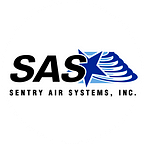Mail Processing Safety: Biohazard Control & Containment | Sentry Air Systems
As pathogens, particulate, viruses, and biohazards have become more common to be found in the mail, it is imperative now more than ever to ensure some safety measures and controls are in place to prevent these hazards. By the recommended guidelines of the U.S. Postal Service and OSHA, private mailroom operations that deal with any manner of sorting, distributing, or handling should have secondary engineering controls implemented into their everyday routine.
Biohazard Control
What is a biohazard?
The term biohazard refers to any biological material including microorganisms, plants, animals, or byproducts of said living organisms, that pose a threat to their health.
Hazardous agents and particulates can generally be categorized into three groups: physical, chemical, and biological. Due to mail routinely being X-rayed and screened for radioactivity, physical hazards are commonly addressed and very rarely cause a threat or harm to an individual handling the mail. In conjunction, chemically and biologically induced hazards can cause chronic and acute health hazards when aerosolized from the packaging it was delivered in; thus, creating a need for safety implementation. According to the Center for Disease Control (CDC), there are 4 distinct levels of biohazards:
- Biohazard Level 1: Agents that pose minimal threat to humans and the environment.
- Biohazard Level 2: Agents that can cause severe illness in humans and are transmitted through direct contact with infected material. Examples include HIV, hepatitis B, and salmonella.
- Biohazard Level 3: Pathogens that can become airborne and cause serious diseases.
- Biohazard Level 4: Pathogens that pose a high risk of life-threatening disease for which there are no treatments.
Despite several shipping regulations put in place due to the anthrax scare and The World Trade Center being attacked in 2001, several biohazards such as fentanyl and other substances that are harmful when inhaled, or absorbed are often sent via mail. However, the level of safety in handling these products and hazards has been a constant growth that organizations such as the CDC, FBI, OSHA, and the General Services Administration have partnered with the U.S. Postal Service in managing.
Implementing Biohazard Control
According to the CDC, it is best practice to implement a hierarchical system in distribution, handling, and sorting centers to prevent the potential exposure to hazardous pathogens like anthrax, tuberculosis, or Coxiella burnetii
- Secondary engineering controls — A secondary engineering control like the mail safety containment hood; which works by circulating room air into the front of the hood through/or under the sash. Thus, air moves uniformly across the work surface of the hood and sweeps hazardous aerosol contaminants though the hood and collects them through a HEPA filter.
- Administrative controls — limit the number of people potentially exposed
- Operational controls — OSHA suggests the use of nitrile gloves versus latex due to concern of allergy and sensitivity problems in which would not offer sufficient protection.
- Personal protective equipment (PPE) — prevent cutaneous skin and inhalation exposure
Mail Safety Containment Hood
Our ductless fume hood is designed for maximum mail handling safety, essentially protecting the operator from exposure to potential biohazards, airborne pathogens, and particulate during the handling, sorting, and distribution of envelopes and small packages.
Sentry Air System’s mail safety containment hoods bolster a “recirculating” air pattern with no external ducting or venting in order to keep any contaminated air from the operators breathing zone. As well as, utilizing HEPA-filters to capture the aerosolized biohazards and pathogens up to 99.97% efficient on particles down to 0.3 microns in size. Additionally, there is a shield between the operator and workspace to contain any unknown hazards or substance inside of the hood.
Learn more about Ductless Fume Hoods
Contact us today to improve your facility’s mail processing safety and biohazard control!
Talk to an Expert • Email Us Today • Visit Our Website
Call us today at 1–800–799–4609
Originally published at https://www.sentryair.com on September 22, 2020.
